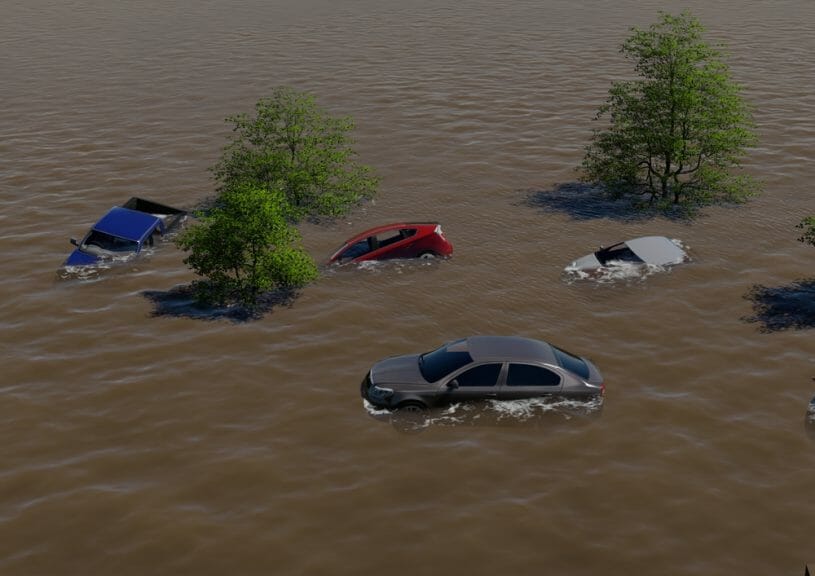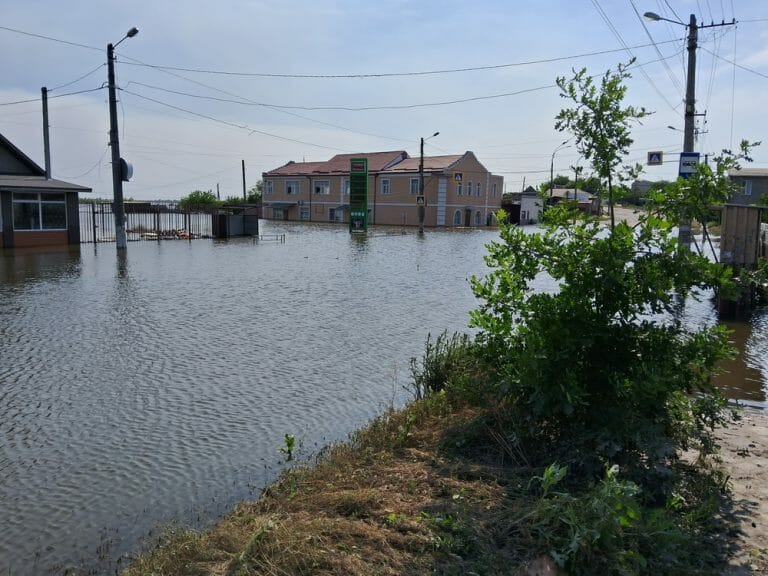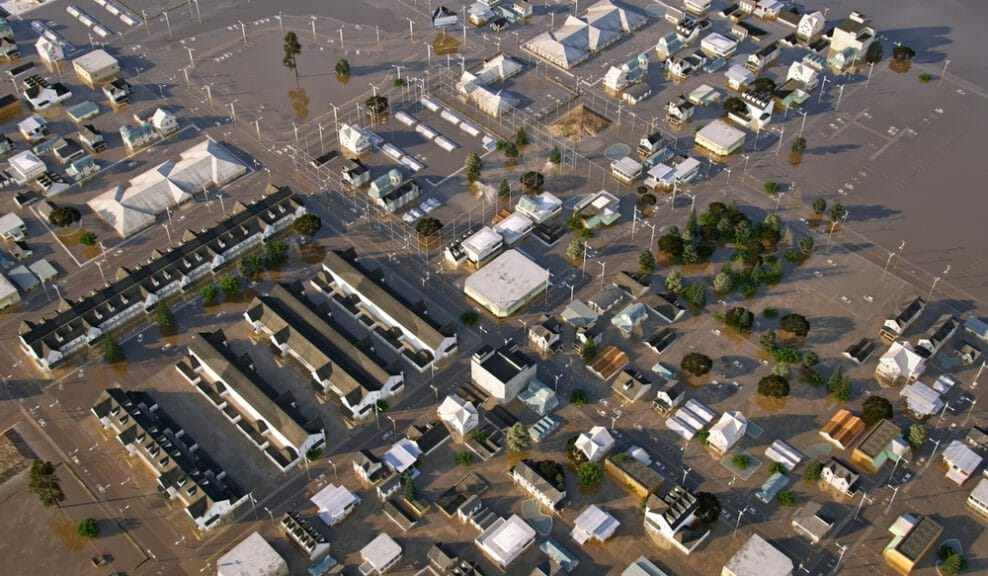As Ukraine continues to make small gains in its counteroffensive’s early stages, the country is still suffering the effects of last week’s Kakhovka Dam collapse. The broken dam at the Kakhovka Reservoir, destroyed by an explosion, is threatening the livelihoods of Ukrainians upstream and downstream after the waters receded, harming crucial industries.
The Dam’s Collapse
Amid their efforts to retake villages in eastern Ukraine, Ukrainian soldiers are also busy patrolling flooded areas in Kherson, the port city in southern Ukraine where the dam on the Dnipro River collapsed early last Tuesday, June 6. So far the collapse is one of the biggest ecological and industrial disasters to face Europe in decades, with numerous villages destroyed, farmland flooded, and tens and thousands of people currently without power or clean water.
Many experts have argued that Russian forces caused an explosion at the dam which led to the disaster. However, the dam and hydroelectric power plant, under Russian control, are inaccessible to outside investigators, making it impossible to say for sure if Russia targeted the dam deliberately.
On June 6, United Nations Secretary-General António Guterres told reporters in New York that the UN has no access to information verifying how the disaster occurred. However, Guterres stated that the tragedy is “another devastating consequence of the Russian invasion of Ukraine” and “yet another example of the horrific price of war on people.”
For the last several months, Russia and Ukraine have been accusing each other of plotting to sabotage the hydroelectric dam. Last week, both sides said that an attack on the dam was imminent, after previous allegations have gotten lost amid the flurry of more general wartime claims and counterclaims.

The Damage
In communities downriver from the dam, the flood of water that the burst dam unleashed flooded houses and swept away property and livestock within just a few hours. Residents as far away as the town of Antonivka, about 40 miles downstream, reported watching floodwaters rushing past them carrying uprooted trees and debris from broken-down houses. Meanwhile, upstream, water levels in the reservoir have dropped by three to four feet per day, causing water taps to run dry and leaving residents without clean water to use for drinking, cooking food, watering plants, or doing laundry.
The Kakhovka Reservoir is the largest body of freshwater in Ukraine. For the 75 years since the reservoir was built, water from the reservoir has supported communities across a huge region of the country, powering vineyards, gardens, shipping business, steel plants, and other industries that all rely on access to the freshwater. Regarding the dam’s collapse, Oleksii Vasyliuk, head of the board of the Ukrainian Nature Conservation Group, said last week, “It’s probably the biggest ecological disaster in the history of independent Ukraine.” According to Vasyliuk, freshwater fish from the reservoir will likely wash out to sea and die in the saltwater, and shellfish will die in the mud as the waterway dries out.
Meanwhile, pollution from local industrial plants that has settled on the floor of the reservoir has now been disturbed. According to experts, much of this pollution will be exposed into the air and dispersed into the atmosphere as the mud dries. The reservoir is currently emptying rapidly, with the remaining water expected to settle behind what is left of the Kakhovka Dam.
Since last Tuesday, the Ukrainian government has been evacuating people downstream and upstream of the collapse. In the southern port city of Mykolaiv, 40 miles east of Kherson, an emergency train left the station to collect people fleeing the rising waters. Humanitarian groups have been working on the scene to provide aid to people whom the flooding has forced from their homes, but are struggling to communicate through spotty reception and get accurate information about the current state of the flooding.

Industrial Concerns
Amid the chaos, locals worry about long-term losses to their livelihoods, as the flood has destroyed many crucial industries, including farming, shipping, and power, that relied on water from the reservoir.
Many residents have also expressed concern for the Zaporizhzhya Nuclear Power Plant (ZNPP), located by the Kakhovka Reservoir in southeastern Ukraine. The power plant is the largest nuclear power plant in Europe and among the 10 largest in the world. According to Ihor Syrota, head of energy company Ukrhydroenergo, by Thursday evening, the reservoir’s water level had fallen below the lowest point for plant-supplying water pumps to operate normally.
The power plant is still managing to pump cooling water from the reservoir, but the International Atomic Energy Agency (IAEA) is currently monitoring the reservoir’s water levels, which are still dripping dramatically. “Nevertheless,” said the IAEA’s Director General Rafael Mariano Grossi, “the general nuclear safety and security situation remains very precarious and potentially dangerous.”
Meanwhile, people living across the water from the plant are increasingly worried about its fate. According to Tetyana, a local resident interviewed in The New York Times,
I am following official announcements because we will need to take action in time. We have bags packed, food in boxes. We have a pool of water—we cover it, in case of radiation.
Tetyana, Ukrainian resident close to the Zaporizhzhya Nuclear Power Plant.














